ISO/IEC 19770-1:2017 - Everything You Need to Know
Welcome to our exploration of ISO/IEC 19770-1:2017, a cornerstone standard in the realm of IT Asset Management (ITAM). Managing IT assets efficiently has become crucial for organisations worldwide as the digital landscape evolves. ISO/IEC 19770-1:2017 is a guiding beacon, offering a robust framework tailored explicitly for managing software assets. This standard not only streamlines compliance and risk management but also paves the way for optimising IT costs.
By delving into ISO/IEC 19770-1:2017, we uncover how its strategic application can transform an organisation's approach to ITAM, enhancing operational efficiency and aligning IT assets with broader business objectives.
Join us as we unravel this essential standard's significance and practical applications.
What is ISO/IEC 19770-1:2017?
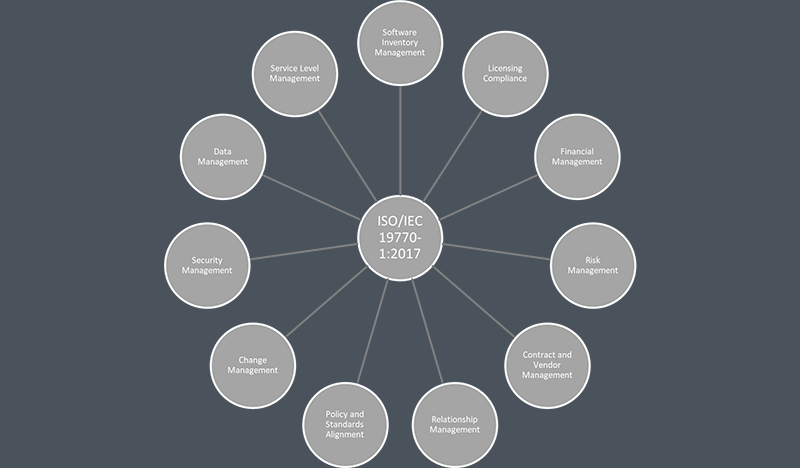
ISO/IEC 19770-1:2017 is a standard that provides a framework for IT Asset Management (ITAM). Specifically, this standard focuses on the processes necessary to manage software assets effectively. It's part of a series of standards under ISO/IEC 19770. Key elements of ISO/IEC 19770-1:2017 include:
Scope and Objectives
It defines the scope and objectives of ITAM and sets out a standard approach for implementing ITAM systems effectively.
Processes and Best Practices
It outlines the best practices and processes for managing IT assets throughout their lifecycle, from acquisition to disposal. This includes software inventory management, compliance, and license management.
Tiered Approach to ITAM
The standard adopts a tiered approach to ITAM, allowing organisations to assess their current ITAM practices and gradually improve them in line with the standard's guidelines.
Management System Requirements
It includes requirements for establishing, implementing, maintaining, and improving an ITAM system, ensuring it aligns with the organisation's overall business goals.
Performance Improvement
It helps organisations continuously improve ITAM practices, leading to cost savings, risk reduction, and improved efficiency in IT operations.
Integration with Other Management Systems
The standard is designed to be compatible with other management system standards, allowing for easier integration with systems like ISO 9001 (Quality Management) and ISO/IEC 27001 (Information Security Management).
ISO/IEC 19770-1:2017 is widely used by organisations that want to establish a robust ITAM process, ensuring that they can manage their software assets effectively and in compliance with legal and regulatory requirements. It is precious for organisations looking to optimise their software spending, ensure compliance with software licenses, and mitigate risks associated with software asset management.
What is ITAM?
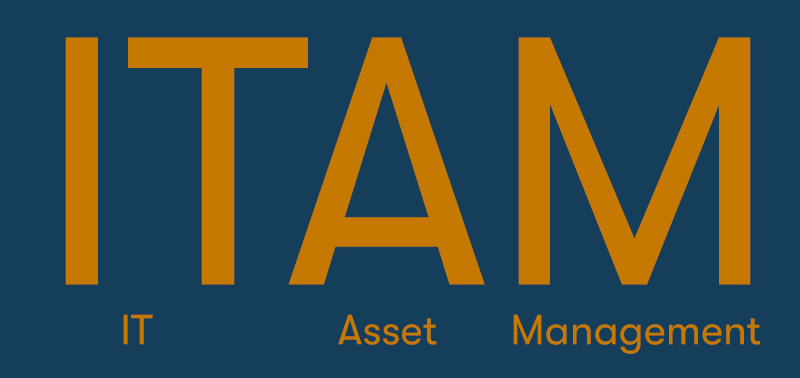
ITAM, or IT Asset Management, is a set of business practices that incorporates IT assets across the business units within an organisation. It involves the management of the lifecycle of IT assets to maximise their value, control costs, manage risks, and support decision-making about IT investments. ITAM is crucial for optimising the utilisation and management of IT assets, which, in today's digital world, are pivotal to a business's operational efficiency and effectiveness. Key aspects of ITAM include:
Asset Lifecycle Management
This involves managing IT assets from procurement to disposal, ensuring that each asset is utilised effectively and retired at the appropriate time.
Inventory Management
Keep track of all IT assets throughout the organisation, including hardware and software. This ensures that the organisation clearly understands what assets it owns, where they are, and how they are being used.
License Management
Managing software licenses to ensure compliance with legal agreements and avoid penalties. This also includes optimising the use of software to get the most value from purchases.
Risk Management
Identifying and managing risks associated with IT assets, such as cybersecurity, compliance, or operational risks due to outdated or unsupported software or hardware.
Cost Management
Analysing and optimising the costs associated with IT assets throughout their lifecycle, which includes acquisition, operation, maintenance, and disposal costs.
Strategic Planning
Supporting strategic IT decision-making by providing accurate information about IT assets, costs, and business value.
Integration with Other Business Processes
Coordinating with other business processes such as finance, procurement, and human resources for a holistic approach to asset management.
ITAM is a critical component for organisations looking to ensure that their IT assets contribute to the business's strategic objectives while being managed cost-effectively and in compliance with various regulations and standards. Effective ITAM can lead to significant cost savings, improved IT service delivery, enhanced security, and better compliance with legal and regulatory requirements.
Why is ISO/IEC 19770-1 Important for ITAM?
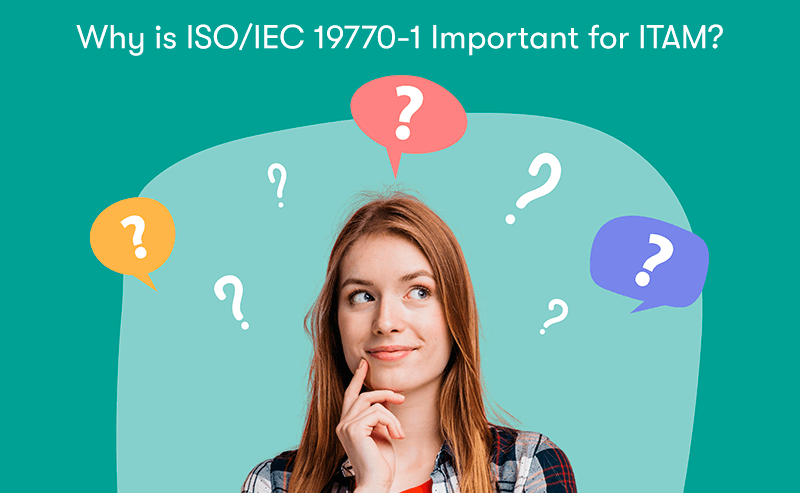
ISO/IEC 19770-1 is necessary for IT Asset Management for several key reasons, as it provides a structured framework and set of best practices for managing IT assets effectively:
Standardised Framework
ISO/IEC 19770-1 offers a standardised approach to ITAM, helping organisations establish consistent and efficient practices. This standardisation is crucial for organisations with complex IT environments, as it ensures that all aspects of ITAM are addressed uniformly.
Improved Compliance and Risk Management
The standard provides guidelines for managing software licenses and ensuring compliance with legal and contractual obligations. This reduces the risk of non-compliance, which can lead to legal penalties and financial losses.
Cost Optimisation
By following the best practices outlined in ISO/IEC 19770-1, organisations can optimise the usage of their IT assets, leading to cost savings. This includes avoiding over-purchasing of licenses, utilising existing assets more effectively, and making informed decisions about asset refreshes or disposals.
Enhanced Decision Making
ISO/IEC 19770-1 helps organisations maintain accurate records of their IT assets, which is critical for informed decision-making. Understanding what assets are owned, where and how they are used. Helps support strategic planning and investment decisions.
Lifecycle Management
The standard emphasises the entire lifecycle of IT assets, from acquisition to disposal. This comprehensive approach ensures that assets are managed efficiently throughout their lifespan, maximising their value to the organisation.
Integration with Other Management Systems
ISO/IEC 19770-1 is designed to align with other management system standards, such as ISO 9001 for quality management and ISO/IEC 27001 for information security. This integration facilitates a holistic approach to organisational management, where ITAM becomes a part of the broader operational framework.
Benchmarking and Continuous Improvement
Organisations can benchmark their ITAM practices against best practices globally by adhering to an international standard. This aids in identifying areas for improvement and driving continuous enhancement in IT asset management.
In summary, ISO/IEC 19770-1 is crucial for ITAM as it provides a comprehensive, standardised framework that aids in managing IT assets more effectively. This leads to better compliance, cost savings, improved decision-making, and overall enhanced management of IT assets, aligning them more closely with the organisation's strategic goals.
How Does ISO/IEC 19770-1 Relate to HAM and SAM?
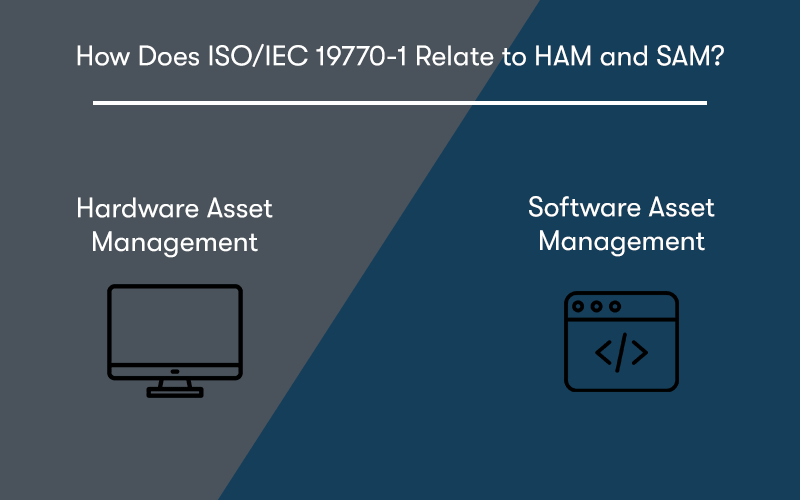
ISO/IEC 19770-1 is closely related to both Hardware Asset Management (HAM) and Software Asset Management (SAM), two crucial components of IT Asset Management (ITAM). Here's how it relates to each:
Software Asset Management
Direct Alignment: ISO/IEC 19770-1 primarily focuses on software asset management. It provides a framework for managing software assets effectively, including guidelines for software inventory management, license compliance, and cost management.
License Management: One of the key aspects of SAM is managing software licenses to ensure compliance with licensing agreements. ISO/IEC 19770-1 gives detailed guidance on managing software licenses effectively, reducing the risk of non-compliance.
Optimisation of Software Assets: The standard helps organisations optimise their software assets, ensuring they are utilised efficiently and cost-effectively.
Hardware Asset Management
Applicability: While ISO/IEC 19770-1 is primarily focused on software, the principles and processes it outlines can also be applied to hardware asset management. This includes lifecycle management, risk management, and cost optimisation of hardware assets.
Lifecycle Approach: The standard emphasises the entire lifecycle of assets, from acquisition to disposal, which is a critical aspect of HAM. It encourages organisations to manage their hardware assets in a way that maximises their value throughout their lifecycle.
Integrating HAM and SAM under ITAM
Holistic IT Asset Management: ISO/IEC 19770-1 can be considered part of a broader ITAM strategy that includes both HAM and SAM. By applying the principles of the standard, organisations can ensure a more integrated approach to managing all IT assets.
Complementary Practices: Effective ITAM requires the integration of both hardware and software asset management. The practices and guidelines provided by ISO/IEC 19770-1 for SAM can complement and enhance the processes used in HAM.
Shared Objectives: Both HAM and SAM share common objectives such as cost reduction, risk management, and compliance. ISO/IEC 19770-1 helps in aligning these objectives and provides a framework to achieve them effectively.
In essence, ISO/IEC 19770-1, while specifically tailored towards software asset management, lays down principles that are beneficial for the overall ITAM process, encompassing both HAM and SAM. Its application helps organisations in achieving a more comprehensive, effective, and integrated approach to managing all IT assets.
What Are ISO IEC Standards?
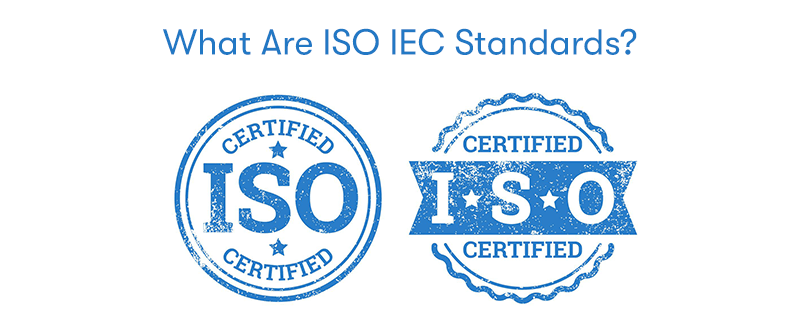
ISO (International Organisation for Standardisation) and IEC (International Electrotechnical Commission) standards are internationally recognised guidelines and specifications for products, services, and systems to ensure quality, safety, and efficiency. They are instrumental in facilitating international trade and improving the reliability and interoperability of products and systems worldwide. Key Features of ISO/IEC Standards include:
Global Consensus
These standards are developed through global consensus, involving experts from various national standards organisations. This ensures that they consider the needs and requirements of a wide range of stakeholders.
Quality Assurance
ISO/IEC standards help organisations achieve consistent product and service quality. By adhering to these standards, companies can demonstrate to customers that their offerings meet high-quality benchmarks.
Safety and Reliability
Many ISO/IEC standards focus on safety and reliability, ensuring that products and services are safe to use and perform reliably as intended.
Efficiency and Interoperability
These standards often promote efficiency and interoperability, making it easier for products and systems from different manufacturers to work together seamlessly.
Environmental and Social Responsibility
Some standards are designed to help organisations reduce their environmental impact and improve their social responsibility.
Development Process
The development of ISO/IEC standards involves multiple stages, including:
- Proposal Stage: A member body or a technical committee proposes a new standard.
- Preparatory Stage: Experts draft the standard.
- Committee Stage: The draft is circulated for study and comment among the relevant ISO/IEC committees.
- Enquiry Stage: The draft is circulated to all ISO/IEC member bodies for voting and comments.
- Approval Stage: Once the draft has been refined and agreed upon, it is put to a final vote.
- Publication: After final approval, the standard is officially published.
By adhering to ISO/IEC standards, organisations can demonstrate to their customers and stakeholders that they are committed to delivering high standards of quality and reliability in their products and services. These standards are pivotal in fostering innovation, protecting consumers, and breaking down barriers to international trade.
What Are Some Examples of When ISO/IEC 19770 Comes Into Play?
ISO/IEC 19770, particularly its first part, ISO/IEC 19770-1, comes into play in various scenarios within an organisation's IT asset management processes. Some common examples include:
Software Procurement and Acquisition
When an organisation acquires new software, ISO/IEC 19770-1 can guide the process of ensuring that the software is properly licensed, the licenses are managed efficiently, and the organisation remains compliant with legal and vendor requirements.
IT Audits and Compliance Reviews
During internal or external IT audits, ISO/IEC 19770-1 is a benchmark to assess the organisation's compliance with best practices in software asset management. It helps identify areas where the organisation is at risk of non-compliance with licensing agreements or legal regulations.
Mergers and Acquisitions
In cases of mergers or acquisitions, ISO/IEC 19770-1 can be instrumental in evaluating the software assets of the involved entities. It aids in understanding the licensing obligations, potential liabilities, and synergies in software asset portfolios.
Cost Management and Optimisation
Organisations looking to optimise IT spending can utilise ISO/IEC 19770-1 to manage software assets more effectively. This includes avoiding unnecessary purchases, ensuring efficient use of existing licenses, and planning for future needs.
Risk Management
ISO/IEC 19770-1 helps organisations identify and mitigate risks associated with software assets, such as using unauthorised or unsupported software, which can lead to security vulnerabilities or legal issues.
Implementation of ITAM Tools and Systems
When implementing IT asset management tools and systems, this standard can provide guidelines on what features and capabilities are essential, ensuring that the tools align with best practices in software asset management.
Software License Negotiations
The standard can also be used as a guide for negotiating software licenses with vendors, ensuring that the terms align with the organisation's asset management strategy and compliance requirements.
Change Management
In situations where there are significant changes to the IT infrastructure or software needs of an organisation, ISO/IEC 19770-1 can help manage these changes in a way that maintains compliance and optimises software asset utilisation.
Business Continuity and Disaster Recovery
The standard can play a role in ensuring that software assets are accounted for and managed appropriately in business continuity and disaster recovery planning, ensuring that critical software is available and compliant in the event of a disruption.
Cloud Services Management
As organisations increasingly use cloud-based services, ISO/IEC 19770-1 can help manage cloud software licenses and ensure that cloud services are included in the overall IT asset management strategy.
By adhering to ISO/IEC 19770-1, organisations can effectively manage their software assets throughout their lifecycle, ensuring compliance, optimising costs, and reducing risks associated with software management.
Final Notes on ISO/IEC 19770-1 and ITAM
In conclusion, ISO/IEC 19770-1:2017 is a pivotal standard in the IT Asset Management landscape, offering a comprehensive framework for effective software asset management. It is integral to ensuring compliance, optimising costs, and managing risks in IT environments. This standard harmonises with Hardware Asset Management and Software Asset Management, promoting a holistic approach to ITAM.
Adopting ISO/IEC 19770-1 can significantly enhance an organisation's ability to manage IT assets efficiently throughout their lifecycle. From procurement to IT audits and mergers to disaster recovery, this standard provides the guidelines necessary for maximising the value and minimising the risks associated with IT assets, ultimately supporting organisations' strategic objectives in today's digitally driven world.


